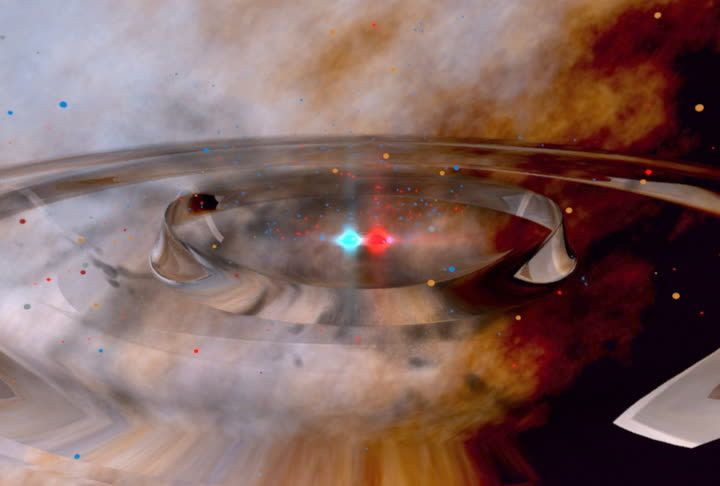2 Supermassive Black Holes Likely To Ram Into Each Other Within 3 Years
KEY POINTS
- The two black holes have been spotted in nearby Seyfert galaxy SDSS J1430+2303
- The black holes are supermassive black hole binary (SMBHB) candidate
- Scientists continue to explore the events at the heart of SDSS J1429+2303.
A close study of a nearby galaxy has led to the discovery of an unprecedented black hole binary candidate. The study, if proved right, will be our best bet to see two black holes collide in the next three years.
Called the supermassive black hole binary (SMBHB), the two black holes have been spotted in nearby Seyfert galaxy SDSS J1430+2303, according to the study. Scientists tracking the unusual behavior of the galaxy, taking place about a billion light-years away, suggest that we might be able to witness one of the most highly anticipated events in modern astronomy.
Observations in the fluctuations in light from the center of the galaxy SDSS J1430+2303 look like a pair of supermassive black holes to the researchers. Destined for an imminent collision, the black holes have a combined mass of 200 million Suns.
A Pair of Supermassive Black Holes Could Be Fated to Collide Within 3 Years https://t.co/NLPIZLWxHi
— ScienceAlert (@ScienceAlert) August 29, 2022
In cosmic terms, the word 'imminent' has a distinct implication. It may indicate duration which often stretches on for entire lifetimes. Luckily for us, here imminent means only three years.
Led by Liming Dou of Guangzhou University in China, a team of researchers used data from different X-ray observatories over a period of 200 days. The team endeavored to identify high-energy signatures that are associated with a close supermassive black hole binary on a decaying orbit.
"They did see variations in the X-ray light emitted by the galaxy, as well as a type of emission associated with iron falling onto a black hole, which the team detected with a 99.96 percent confidence level from two different instruments," reported ScienceAlert.
But take this information with a pinch of salt. There is no conclusive proof to attest to this future event at present. According to the report, scientists still don't know for sure if that's what is happening at the heart of SDSS J1429+2303.
Galactic centers are odd places, giving signals that are difficult to interpret. This means it is very well possible something else might be causing the variability in the core of J1430+2303.
Hence, scientists have advised continuous monitoring of the strange galaxy to find conclusive evidence.
The first detection of merging black holes was back in 2015 as it opened up a new era in astronomy. Since then, many such detections have been made. Massive breakthroughs have been made such as a merger of two black holes sending ripples through space-time which can be detected using gravitational waves.
To date, the majority of all these mergers have been binary black holes with masses akin to individual stars. The reason behind this is the mass range of our gravitational wave instruments- LIGO and Virgo. These are responsible for the detection of gravitational waves.
The slower ripples generated by spiraling and colliding supermassive black holes have a frequency range in millions to billions of times the mass of the Sun, and as such are in a range too low for our current observatories to pick up.
Still, even without a detector that can sense low-frequency gravitational waves, scientists expect to witness a display of intense outburst of light across the spectrum.

© Copyright IBTimes 2024. All rights reserved.





















